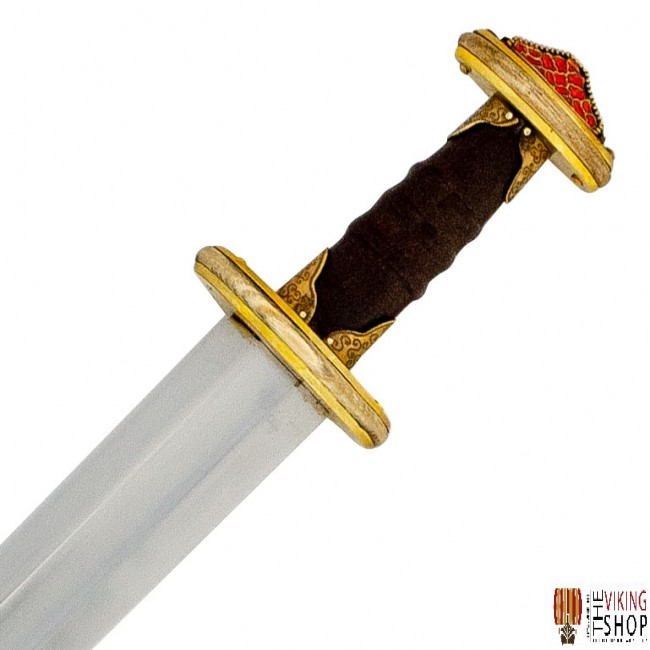
The Viking Shop Sutton Hoo Sword Brass
Swords were the most highly prized weapons in the early Anglo-Saxon period. Blades from this time were made using a technique known as pattern-welding, where rods of iron are twisted and then forged to form the core of a blade to which a sharp cutting edge was added. The Sutton Hoo sword is richly furnished with a gold pommel set with garnets, gold guards and filigree clips on the grip.

Sword Viking Sutton Hoo, s. VII ᐉ Swords functional ᐉ Medieval Shop
Sutton Hoo's Treasures. The excavations of mounds 1, 2, 3 and 4 in 1938 and 1939 by Basil Brown and Charles Phillips unearthed swords, shields, helmets, gold purses and belt buckles, jewels and silver plate. The Sutton Hoo helmet is arguably the best known artifact. Mound 1 was unique.

Sutton Hoo sword with enamel
The Sutton Hoo sword was made by a master-craftsman. Its hilt (handle) fittings are gold and the pommel is set with red garnets in an intricate pattern. The sword was buried in a leather-bound.
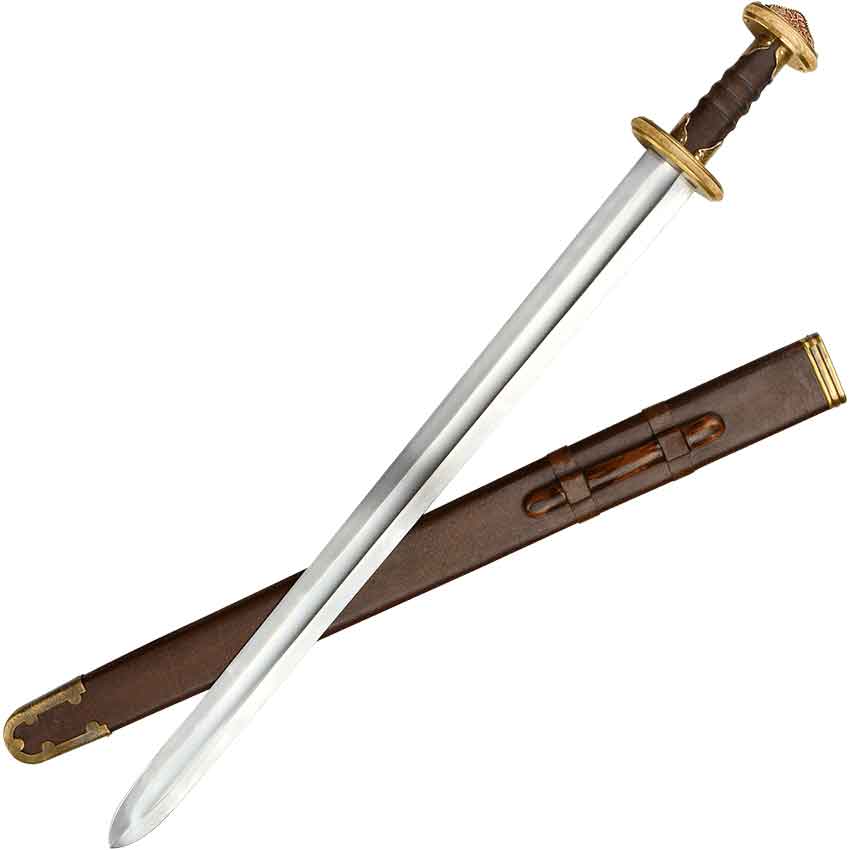
Sutton Hoo Sword
The Sutton Hoo sword has been the subject of various research and studies. We'll touch upon some of the key findings and insights related to its history. The Sword's Influence. The influence of the Sutton Hoo sword reverberates through history. We'll discuss its impact on subsequent sword-making, craftsmanship, and its role in shaping the.

Sutton Hoo Practical Sword
The Sutton Hoo ship during excavation, 1939. The Sutton Hoo ship burial is one of the greatest archaeological discoveries of all time. In simple terms, it is the grave of a Very Important Person who died in the early seventh century, during the Anglo-Saxon period. This was a time before 'England' existed. Instead, there was a group of smaller.

Sutton Hoo sword with enamel
The sword-blade found in the Sutton Hoo ship burial is especially complex. The sword is richly furnished with gold hilt (handle) fittings. The pommel is inlaid with garnet cloisonné, the guards are made from gold plates, and the grip has two gold mounts decorated with delicate filigree. Worn patches on the sword's pommel were probably caused.

Sutton Hoo Practical Sword
SUTTON HOO The Sutton Hoo burial ground in East Anglia [1], England [2],. The regalia included a sword, a decorated purse, and two shoulder clasps, all made of solid gold inlaid with garnets imported from western Asia, and an iron helmet with bronze zoomorphic decoration. Toward the western end were stacked spears and an iron stand.
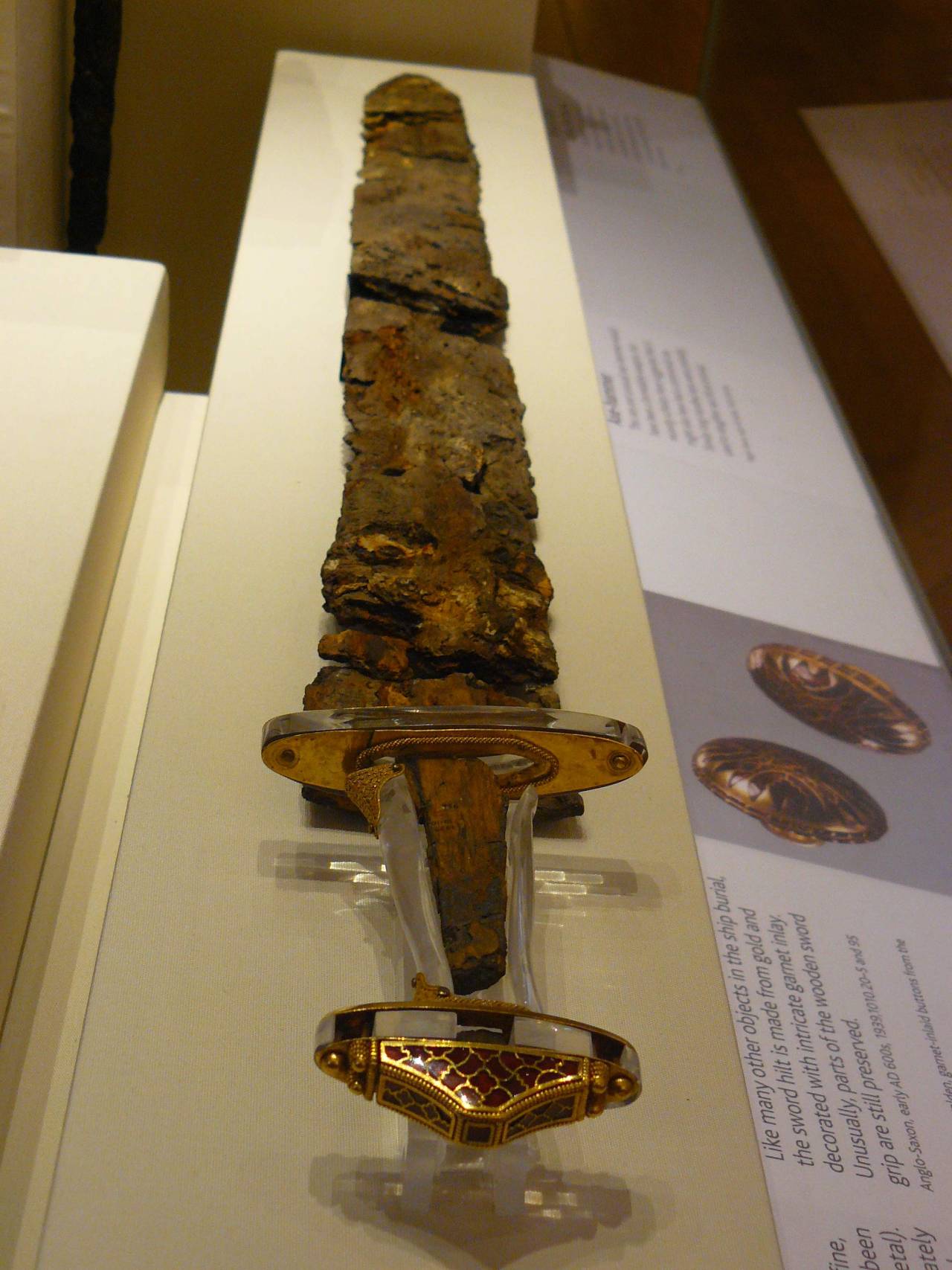
ANCIENT ART — Sword from the AngloSaxon Sutton Hoo shipburial,...
Nowhere are the ideas of power and wealth more clearly combined, however, than in the Sutton Hoo sword. Its ornate gold fittings are carefully lit to show off their minutely detailed decorations, and most strikingly, the scabbard bosses are inlaid with patterns of equalarmed crosses and mushroom shapes - a motif also seen on some of the newly.

Sutton Hoo Sword
Carey Mulligan as Sutton Hoo landowner Edith Pretty with Ralph Fiennes as archaeologist Basil Brown.. sword and shield, believed to have belonged to East Anglia's 7th Century ruler King Rædwald.
Castle Keep
Herbert James Maryon OBE FSA FIIC (9 March 1874 - 14 July 1965) was an English sculptor, conservator, goldsmith, archaeologist and authority on ancient metalwork.Maryon practiced and taught sculpture until retiring in 1939, then worked as a conservator with the British Museum from 1944 to 1961. He is best known for his work on the Sutton Hoo ship-burial, which led to his appointment as an.
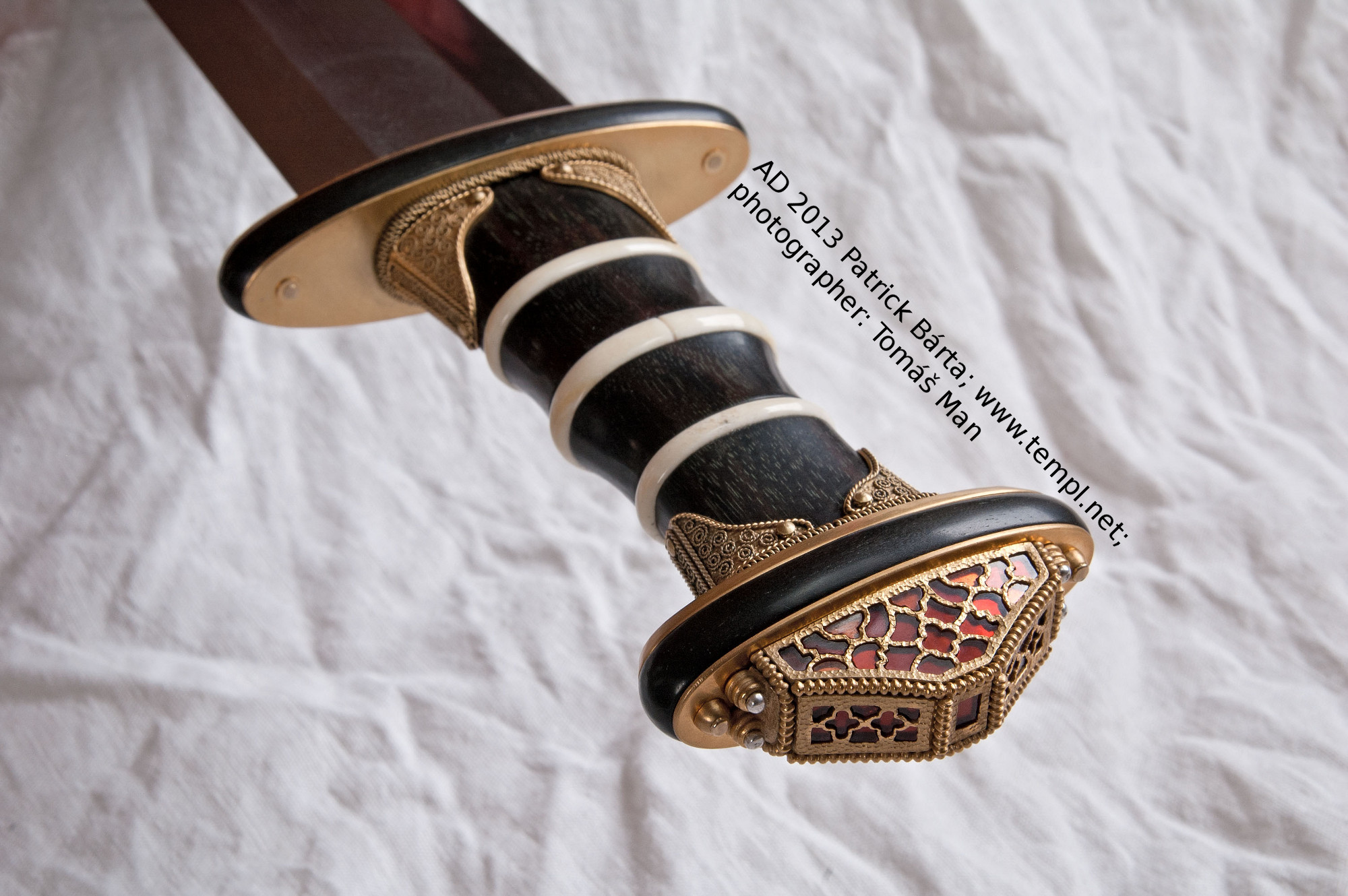
Sutton Hoo hilt still shiny r/SWORDS
The Sutton Hoo sword is part of a long tradition of Germanic swords that began during the late Roman period when some of the tribes, at least those in the north, adopted the Roman cavalry sword, the spatha, and began to make it their own. The evidence for this comes from many bog finds, particularly those in Nydam, Kragehul1, Vimose and Illerup.
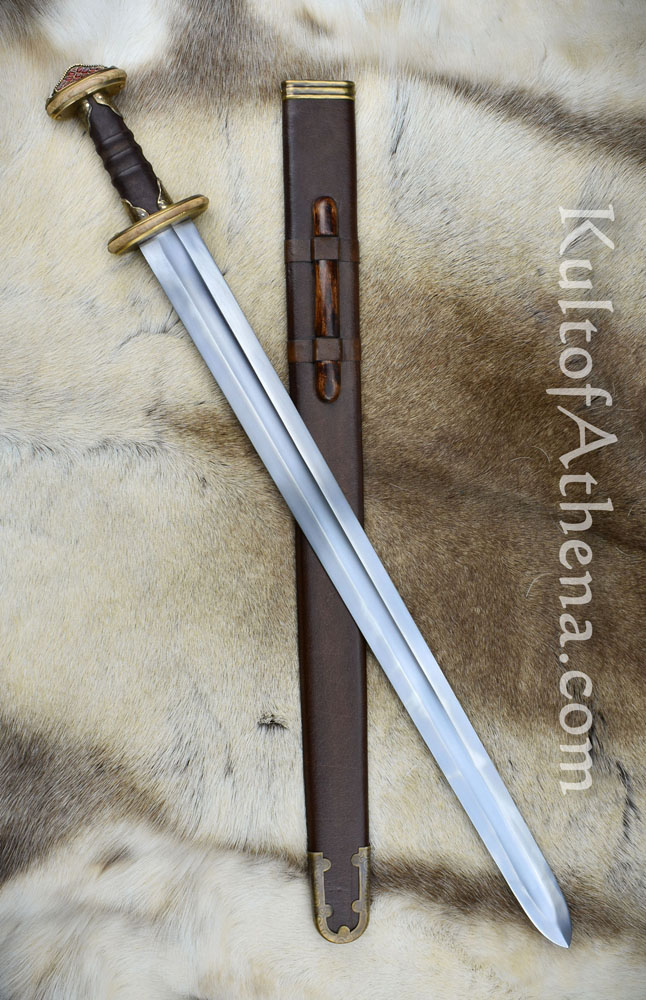
Sutton Hoo Migration Era Sword
Mr Fern, an archaeologist and guest curator of the exhibition - called Swords of Kingdoms: The Staffordshire Hoard at Sutton Hoo - said it was a "dream come true" to have the trove back in East.

Sutton Hoo Sword, 7th century +queespadas
The Sutton Hoo sword was not restored from fragments - it was lifted as a solid but rusted unit. A more proper description, based on the catalogue entry in Sutton Hoo, Volume I. p. 441, would read: pattern-welded iron blade rusted in an oxydised fur-lined wooden scabbard, bound round the top with tapes. ACE, 25 June 1990. Attached to 1939,1010.19.

Early AngloSaxon Sutton Hoo Sword with Scabbard, 7th c. Outfit4Events
Over 1,300 years later, the sword was painstakingly re-created by Scott Lankton is now on display, alongside the original in the British Museum. The Sutton Hoo sword has an iron pattern-welded blade that is heavily corroded. The blade is wide and tapers slightly towards the pointed tip. Towards the hilt, two circular indents mark the location.

Pin on AngloSaxons
MLA Style. Museum, The British. " Hands on with the Sutton Hoo Sword ." World History Encyclopedia. World History Encyclopedia, 08 Aug 2019. Web. 04 Jan 2024. Sue Brunning (and her trusty foam sword) are back for another sword story. This time Sue takes us up close and personal with one of the most famous swords ever.

Sutton Hoo Sword Lankton Metal Design
Anglo-Saxon Shoulder Clasp from Sutton Hoo Burial, 625-630 CE Anglo-Saxon Sword Belt End Ornament from Sutton Hoo Burial, 625-630 CE. Sutton Hoo is the site of two Anglo-Saxon cemeteries dating from the 6th to 7th centuries near Woodbridge, Suffolk, England. Archaeologists have been excavating the area since 1938, when a previously undisturbed ship burial containing a wealth of Anglo-Saxon.